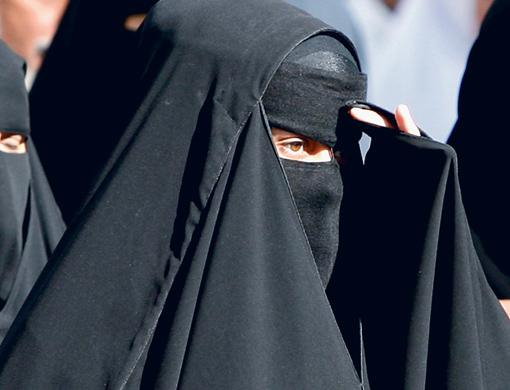
There's a misguided race to ban the face-veil in Europe, and France is taking the lead.
On May 19, the French Cabinet approved legislation to ban women in France from wearing full Islamic face-coverings, the burqa, and niqab, in public areas. France, which contains Europe's largest Muslim population, has been headed in this direction for a while.
In 2004, the government banned students and staff from wearing veils in schools. At that time, the rationale was French secularism. This time, as French President Nicolas Sarkozy says, the rationale for the ban is that it saves women from "subservience and debasement".
But banning women from wearing a veil trespasses on their rights as much as the repressive restrictions that force them to wear a veil.
Historical precedents show that many Muslim women who veil choose to do so. In 2003 when some German states began banning head scarves in the classrooms, the teachers opted to retire instead, stating that wearing a head covering was their personal preference.
Turkey had a series of formal and informal bans, which culminated in the 1990s. But by 2008, thanks to backlash, the government was forced to introduce a constitutional right to wear the veil.
Iran experimented with forced unveiling of women under Reza Shah Pahlavi in 1936. Then, following the White Revolution in 1963, Empress Farah Pahlavi, who did not veil, became a public symbol of Iranian female emancipation. The backlash against the Pahlavi attempts to liberate religious conservatives arguably led to the Islamic Revolution, in which many conservative women actively participated to overthrow the monarchy.
Illegal
Another assertion made by those in favour of banning female veiling is that the women who choose to veil after immigrating have not been exposed to western society long enough to realise, as Eric Besson, France's hard-line immigration minister put it, that "the burqa is unacceptable and contrary to the principles of national identity, of sexual equality, and of the French Republic". This, however, assumes that the state has a right to interfere with personal autonomy, specifically religious clothing, when it perceives it's for someone's own good.
But according to Article 18 of the UN's Universal Declaration of Human Rights, "Everyone has the right to freedom of thought, conscience and religion … freedom, either alone or in community with others and in public or private, to manifest his religion or belief in teaching, practice, worship and observance".
The burqa and the niqab are part of an individual's religious beliefs. It's strikingly contradictory therefore that France, in order to liberate women from perceived Islamic oppression, has to violate their universal human rights.
To be sure, given that France's ban will only affect 2,000 citizens out of 62.3 million, the imminent interdiction is more a symbolic issue than a practical matter.
So why can't the French tolerate the burqa or the niqab?
The resistance to symbols of Islamic faith in public indicate an increasing acceptance in France of the once extremely conservative anti-immigration currents, introduced by Jean-Marie Le Pen and the National Front party, which proposed sending the three million Muslim immigrants back to their countries in 1995.
Islamic dress has become more noticeable in France because increased immigration has changed the dynamic of urban life. The proposed ban on female veiling is clearly a symptom of France's heightened immigration issues.
Perhaps France is fearful that a clash of cultural and religious identities will bring conflict: however, such a ban will only aggravate things.
In fact, conflict and violence frequently arise across political and economic divides but there is nothing inevitable about a clash between the West and Islam. Conflict crucially depends on how these sensitive issues are handled politically.
France's ban on forms of Muslim female garb is a primary example of how to escalate conflict. As one would expect, when France began publicising the future ban on burqas and niqabs in July 2009, Al Qaida's North African network responded by publishing violent threats against France on an extremist website.
The logistical issues created by the veil do not validate this escalating collision. The only practical challenge created by face-covering occurs with state security measures. Yet as Judith Sunderland of Human Rights Watch points out, in these scenarios France and other governments could easily just give Muslim women a private room to unveil, and solve the problem.
As Canada's Quebec, Belgium, the Netherlands, Switzerland and Italy are all considering enacting similar legislation that will ban female veiling in public spaces, they should be very clear about the reason why they are trending in this direction and examine the goals of such bans. So far, proposed bans in France and across Europe seem to be mere emotional responses reflecting cultural and religious intolerance.
France's proposed legislation will go before parliament for a final vote in July. The issue has little actual regulatory impact, influencing a small percentage of the French citizens. The implications for universal human rights, however, are substantial and demand scrutiny.
Taraneh Ghajar Jerven is a Vancouver resident and a freelance writer.










